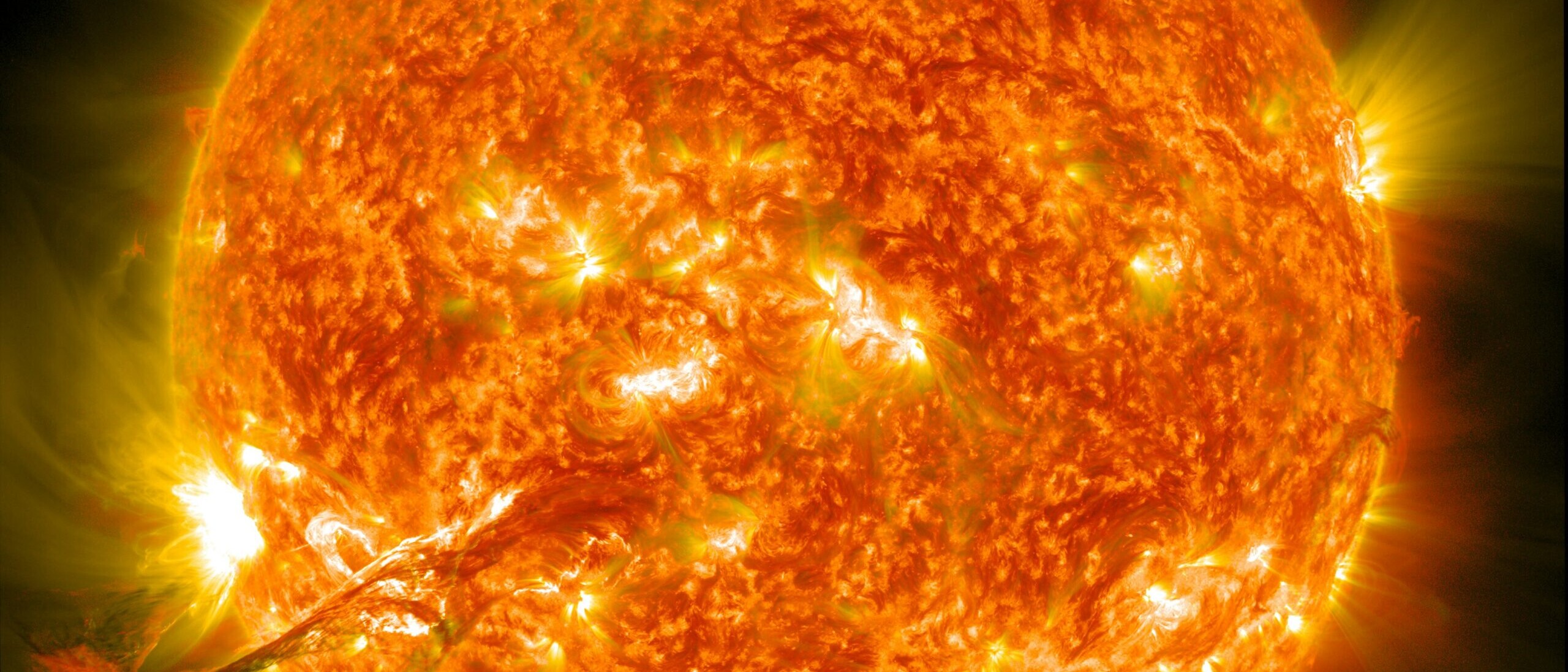The Sun’s Poles are about to Flip: What that Means for your Business
Jeff Wolverton

The sun’s poles flipping is an epic transformation that happens every 11 or so years. The last reverse happened in 2013 and we are due, likely starting sometime in 2024. The poles flipping is not as scary as it sounds, with only minor impacts to the climate. It’s what happens before the flip that can cause trouble.
The Scary Part
Leading up to the pole reversal is a time of increasingly intense magnetic activity on the surface of the sun. Paul Charbonneau, a physicist at the University of Montreal, stated “We are indeed seeing the sun more active than it’s been in probably something like 20 years.” During these periods of solar activity, there is a concern about coronal mass ejections. These explosions that can hurl charged matter a shotgun shot across the solar system, called a “solar storm.” These explosions send the sun’s plasma, and charged particles, racing at hundreds of miles per hour through the solar system.
Once they reach our planet, a lot of the time Earth’s own magnetic field will simply deflect the storm. Other times, the storm can open Earth’s magnetic field and allow much more energy and mass to enter through. When that happens, all sorts of impacts can happen.

NASA’s Goddard Space Flight Center
Solar Flair Effects
On a mild end, solar flares can result is auroras visible in lower latitudes on Earth. On the most extreme end it can disrupt communication satellites and GPS while disabling major parts of the electrical grid. According to AER, the duration of an outage will depend largely on the availability of spare replacement transformers. If new transformers need to be ordered, the outage time can range from weeks to upwards of 6 months. With a total economic cost of $0.6-2.6 trillion. We can expect:
- Widespread communication outages: Satellite systems and radio communications could be heavily disrupted, potentially cutting off large swaths of the internet and phone networks.
- Power grid failures: Major geomagnetic storms triggered by strong flares can induce significant currents in power grids, leading to widespread blackouts and potentially damaging critical infrastructure.
- Data loss and corruption: Sensitive electronic equipment might suffer damage or data corruption, particularly for systems without proper shielding.
Partnering with an IT MSP to Protect your Data
Partnering with an IT company such as PivIT Strategy can help save your data in the case of a solar flair. While there is nothing your IT company can do if there is a country wide power outage for weeks at a time. There is support for when the power gets turned back on. IT MSP companies can offer these strategies to protect your business:
- Hardware and software solutions: They can recommend and implement hardware upgrades like surge protectors, shielded enclosures, and backup generators. They can also suggest software solutions for data redundancy and disaster recovery.
- Cloud storage: Cloud storage providers with geographically distributed data centers can offer some protection, but their infrastructure can also be affected by major flares.
- Multiple locations: They can implement geographically dispersed backups across different regions, minimizing the risk of all copies being affected by a single event.
Conclusion: Preparing for the Inevitable Flip
While the sun’s pole reversal itself may not pose a significant threat, the solar activity leading up to it undoubtedly does. The potential consequences for our IT infrastructure, from widespread communication outages to data loss and power grid failures, demand proactive measures.
Partnering with an IT Managed Service Provider (MSP) like PivIT Strategy is a crucial step in safeguarding your data and minimizing downtime. Their expertise in hardware and software solutions, cloud storage strategies, and geographically dispersed backups can significantly increase your resilience during solar storms. Remember, while IT support cannot prevent widespread outages, it can expedite recovery and ensure business continuity after the storm subsides.
Jeff Wolverton
Jeff, the CEO of PivIT Strategy, brings over 30 years of IT and cybersecurity experience to the company. He began his career as a programmer and worked his way up to the role of CIO at a Fortune 500 company before founding PivIT Strategy.
